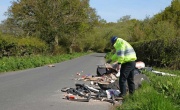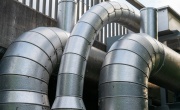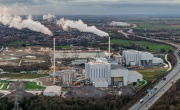MRF reporting numbers show little improvement

Data for the second reporting quarter (Q2) of 2015 (1 April – 31 June) was received from 86 facilities in England and eight in Wales.
In both countries, this represents an increase of one participating MRF on the first quarter (Q1) numbers, and a return to the numbers of MRFs included in reporting for the fourth quarter (Q4) of 2014. However, around 160 facilities in the two countries are thought to meet the criteria requiring data to be reported, which would mean that just over half of MRFs are complying with the regulations.
The ‘Environmental Permitting (England and Wales) (Amendment) Regulations 2014’ oblige MRFs that receive 1,000 tonnes or more of mixed waste material for sorting in four consecutive reporting periods to provide details of the tonnage received from each supplier and the output tonnage for defined material streams. The MRFs are also required to take samples of input and output material so that the average percentage for target, non-target and non-recyclable material can be estimated.
A validation process was carried out on each return by the respective regulator (the Environment Agency in England and Natural Resources Wales in Wales) and queries were raised on 78 returns in England and 8 in Wales.
This number is slightly lower than in the previous two quarters, though WRAP, which publishes the data, states that it is ‘still a high number’. It concedes that this amount of queries was expected while MRFs get used to reporting and the specific data required.
WRAP therefore has warned, as it has with the two previous quarters of MRF data, that specific conclusions should not be drawn from the reported data until processes have been bedded in.
It hopes that this is the last quarter to carry such a warning, however, as the regulators ‘are continuing their programme of annual compliance inspections of each site’, which it says should help with improving the quality and consistency of sampling and data provided.
In terms of the data reported, the average percentage (by weight) of target material received by the responding MRFs was 86.5 per cent for England and 88.8 per cent for Wales, both very similar to figures for Q1 (86.8 per cent for England, 88.3 per cent for Wales).
The average percentage for target material in the four specified output streams was 91.9 per cent or higher for England, compared to 91.4 per cent or higher in Q1, and 89.1 per cent or higher for Wales, compared to 85.7 per cent or higher.
Inconsistencies must be addressed to build data confidence
Commenting on the number of MRFs that have reported their data, Jakob Rindegren, Recycling Policy Advisor at the Environmental Services Association (ESA), said: “It’s still too early to draw any specific conclusions from the data. Having said that, ESA is keen to ensure that any misunderstandings, inconsistencies or different interpretations of how to sample or report are identified and addressed in order to build confidence in the data. In this regard, we also urge the Environment Agency to carry out its two inspections per MRF before the end of 2015…
“In terms of the 87 versus 160 or more sites in England that were expected to notify, ESA’s assessment is that the larger figures are not an up-to-date reflection of the number of MRFs within scope of the regulations. But we welcome the EA’s investigation into whether any of them should in fact notify and we are working closely with them on this.”
Detailed figures for England
The waste supplied to the 86 responding English MRFs was directly attributed to 221 local authorities (LAs) and 301 other suppliers, such as waste management companies or other waste facilities.
The total tonnage of material entering the MRFs in Q2 was 817,779 tonnes (an average of 9,509 tonnes). This is less than in Q1 when 876,744 tonnes was received (10,315 tonnes on average), but more than in Q4 of 2014, when the same number of MRFs received 789,395 tonnes (9,179 tonnes on average).
Sampling was carried out on 7,912 samples totalling 588 tonnes, which is the largest number of samples over the three quarters so far.
The average percentage (by weight) of target material received by the MRFs in Q2 was 86.5 per cent, as highlighted above. Paper, as in the previous two quarters, made up the bulk of the target material received (49.7 per cent, compared to 48.4 in Q1), with glass providing 16.8 per cent (compared to 16.9), plastics 13.0 per cent (14.6) and metals 6.5 per cent (6.6). Eight per cent of the input material was non-recyclable, up from 7.7 per cent in Q1.
The total tonnage of the same specified output materials (SOM) leaving the English MRFS was 595,817 tonnes, a decrease of 43,077 tonnes on Q2, but 13,710 tonnes higher than the first reporting quarter.
On average 91.9 per cent or higher of output material was one of the four SOMs. Individually there was negligible change in the values of the materials leaving the MRFs: paper again had the highest average percentage of targeted material in output (96.9 per cent) and the lowest variability across samples. Plastic output streams, like in previous quarters, had the highest variability, with the bulk of samples registering 88.5-98.7 per cent, a range of 10.2 per cent compared to the next largest range – 5.7 per cent – registered by the glass stream.
Detailed figures for Wales
The eight Welsh MRFs received 49,541 tonnes, the lowest figure over the three quarters (Q1 2015 – 74,473 tonnes; Q4 2014 – 63,128 tonnes). However, the average percentage of target material received by the MRFs was not damaged by the fall in material received, registering 88.8 per cent, slightly up from 88.3 per cent in Q1.
The proportion made up by paper fell from 55.5 per cent to 52.6 per cent in the quarter, though it was still the dominant material, with glass (17.8 per cent) and metals (5.6) virtually unchanged from Q1 levels and plastics (11.8) rising from 9.7 per cent.
The total tonnage of SOM leaving the Welsh MRFs was 48,556, again much lower than the previous two reporting quarters (Q1 2015 – 60,439; Q4 2014 – 57,342).
Like in England, paper returned the highest average of target material (97.7 per cent), with metal (93.5 per cent), plastic (92.9) and glass (89) following. Though this data is mainly consistent with Q1 data, metal (aluminium, scrap metal and steel) has increased by 2.9 per cent.
Scottish reporting regulations underway
A code of practice implementing the same regulations of MRF reporting came into force in Scotland on 1 October.
The Scottish Environment Protection Agency (SEPA), which will manage the regulations, has said that it will try to avoid the compliance problems noted from the English and Welsh MRF reporting obligations through enhanced communication and unannounced inspections.
In order to give MRFs assistance in fulfilling their reporting obligations, Zero Waste Scotland and SEPA have also published guidance, which includes sampling and testing processes that meet the requirements of the code of practice.
WRAP commentary of the Q2 data is available at the Materials Facility Reporting Portal.









